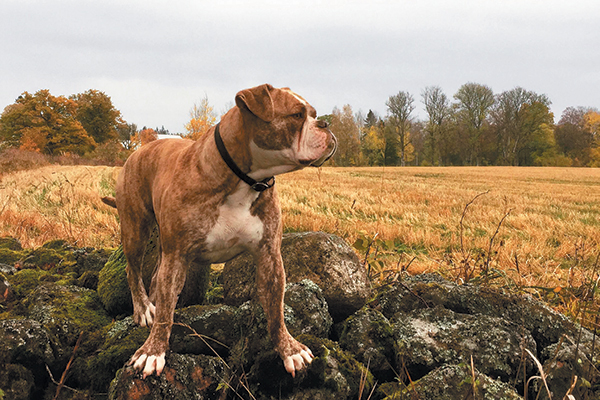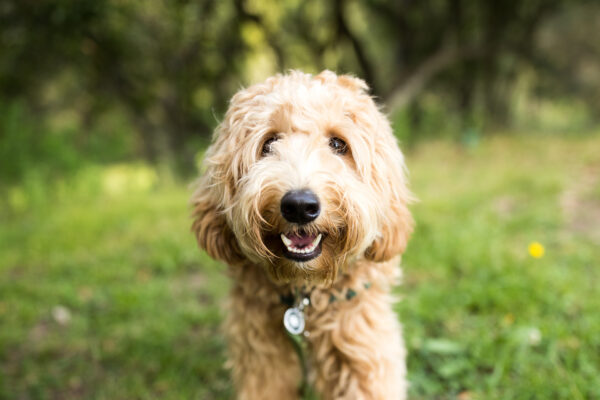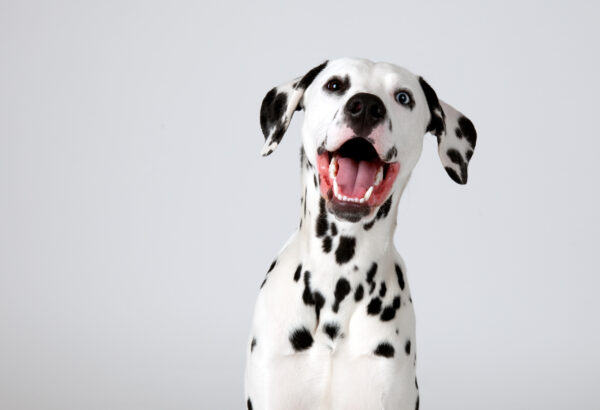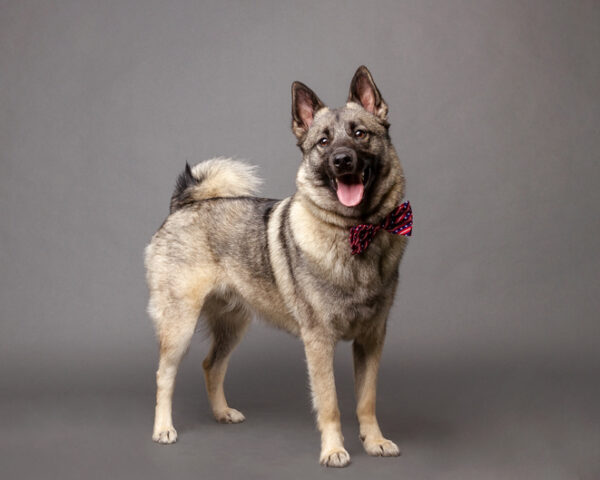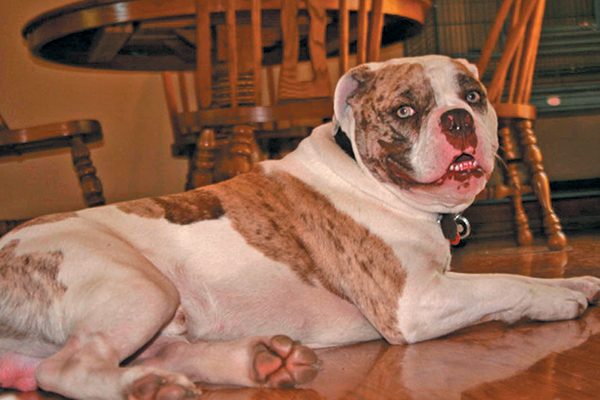
Quick Facts
- Weight: 50 to 100 pounds
- Height: 20 to 26 inches (males are often twice the size of females)
The Look of a Alapaha Blue Blood Bulldog
The Alapaha looks similar to the American Bulldog. It has the same short, rather-pushed-in snout; the same broad stance and defined chest, which is wider than the hips; and often similar markings.
Alapahas come in merle blue, merle brown, and merle red, all with brown or white trimming. These are the most popular colors, but they can also be white with brown or black markings.
Alapahas have drop ears that are not commonly cropped. They have long, slightly curved tails and a very short coat.
The “Blue Blood” in the Alapaha’s name is there to indicate the breed’s regal nature. Indeed, they look like they deserve a crown.
Traits
- Loyal and protective nature
- Wide chest and sturdy stance
- Unusual dewclaw
- Strength
- Reliability
- Lifespan: 12 to 15 years
Ideal Human Companion
- Owners who can handle a strong, robust dog
- Families (young children supervised)
- Those seeking a guard dog
- Athletes or very active folk
What They Are Like to Live With
Alapahas are certainly bulldogs at heart. They are always game for play or work and make diligent guard dogs. Alapahas are more serious than some of the other, more comical bully breeds, but they somehow seem to be laughing at the world. They are very active dogs, more like the energetic American Bulldog than the more lackadaisical English Bulldog. Owners of Alapahas must be prepared to exercise them rigorously and, ideally, involve them in a sport such as weight pulling.
You will save time on grooming as the Alapaha only needs an occasional brush and bath. Training an Alapaha is also usually a quick task, as they are intelligent and eager to please. These dogs are excellent with children, but supervision with small youngsters is recommended because of their strength.
Things You Should Know
It is imperative early on to establish a human alpha, as these dogs will take over if not put in their proper place in the pack. They prefer to be led by a strong leader. The Alapaha’s skill at guarding and protecting is perhaps unmatched, but this trait can become frustrating. If an Alapaha is guarding everything in the household, even the cat, training will be needed to lessen the tendency.
The Alapaha has a small gene pool, which results in some health problems such as entropion (inversion of the eyelids) and deafness. However, the members of the ABBA (Alapaha Blue-Blood Bulldog Association) are careful to prevent problems from inbreeding.
Alapaha Blue Blood Bulldog History
The Alapaha is descended from the English bulldogs that were brought to America from Britain in the 18th century and the American Bulldog which developed here. The first Alapahas were identified in Georgia in the 19th century. The breed was then known as the “plantation dog” and was kept for its guarding ability. Buck Lane led a movement to save the plantation dog; his pet, Otto, was the first of this type. (Indeed, these dogs are sometimes called Ottos.) It became a breed in 1986.
Today, Alapahas are a rare breed. They are not recognized by the AKC but are recognized by other registries.

